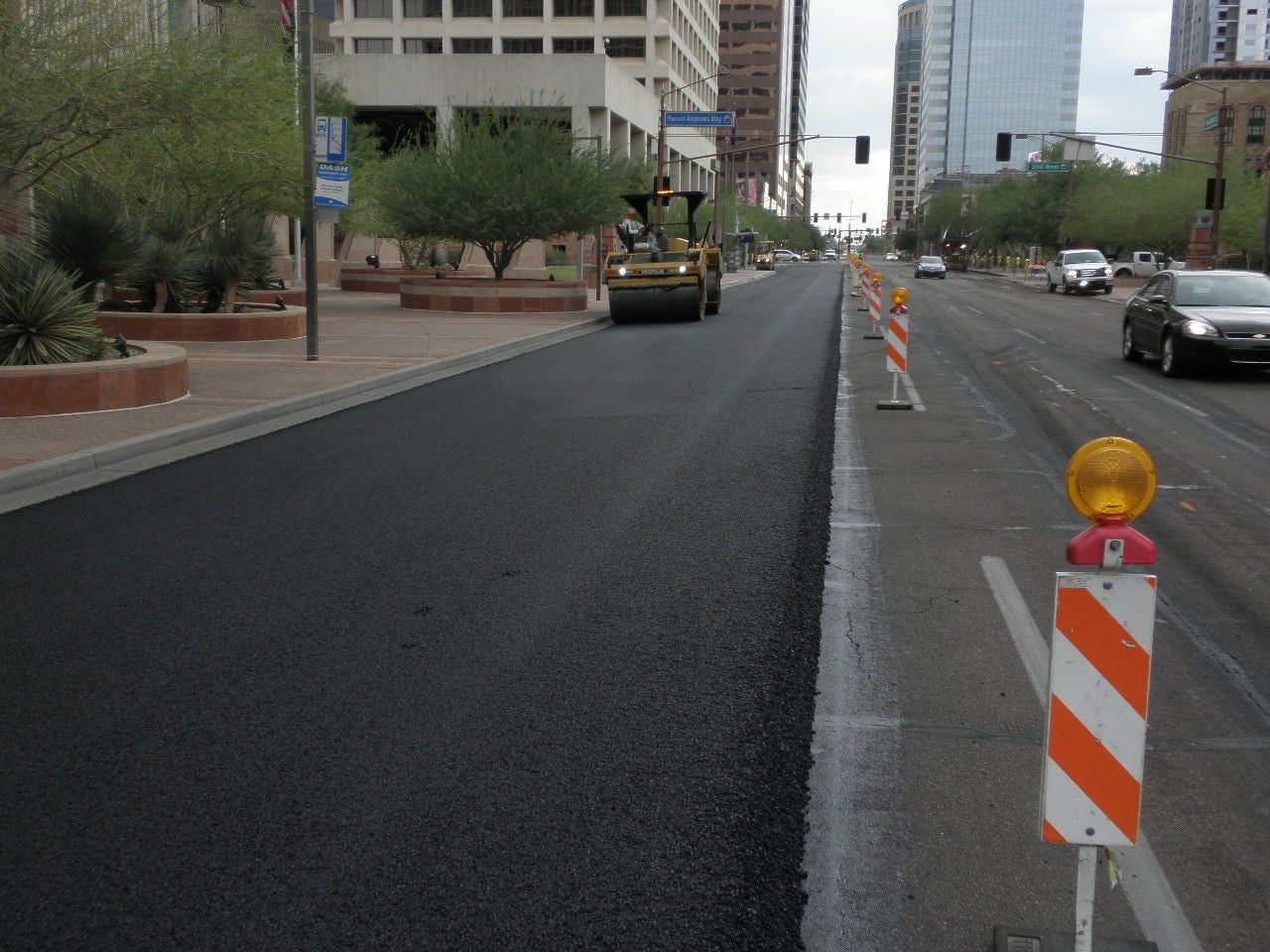This involves maintaining all roadways within the city’s jurisdiction limits and does not include private streets, state routes maintained by ADOT and roads maintained by Maricopa County.
Starting in early spring and continuing through the fall, the Street Maintenance Division performs annual routine street maintenance activities to keep the city’s street network in a state of good repair and extend its lifespan. The work to repair and improve our roadways ranges from pothole patching to the longer term and most expensive projects like resurfacing and reconstruction.
Enhancing the safety of the roadway and improving the ride comfort of the road surface provides a benefit to the traveling public.
